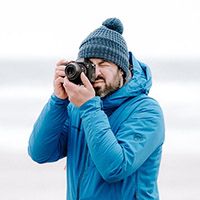Video: Should you use auto ISO?
posted Monday, April 11, 2022 at 11:15 AM EST

If you're still coming to grips with your camera's settings and features, we've got just the video for you. In James Popsys's latest video, he argues that most photographers should be using automatic ISO. The feature can help you capture correctly-exposed images across a wide range of situations.
Before diving into why auto ISO is so useful, let's briefly discuss what auto ISO is and what it does. Of course, to do that, we must first understand ISO. At a basic level, ISO is a setting that increases or decreases the brightness of an image, all else equal. This is achieved by increasing the image sensor's sensitivity, which makes the sensor able to capture brighter images in darker scenes in exchange for more noise. While the nature of noise in digital photography is complex, the gist is that noise is grain. If you increase your ISO, your photo will have more noise, which means the image will be grainier.
Automatic ISO means that instead of a photographer manually selecting an ISO setting, your camera picks one based on a set of parameters and the prevailing lighting conditions. Many cameras allow you to set a specific range of ISO values that it will use when auto ISO is enabled and even pick minimum shutter speeds to use when using auto ISO.
As Popsys argues, most photographers prefer a certain aperture or shutter speed when shooting. If you're capturing a landscape photo and you want to have as much of the scene as possible sharp, you will opt for a smaller aperture, like F11 or F16. If you're photographing a scene with moving water, you may be more concerned with shutter speed than aperture, as you want to either freeze or smooth out the water.
When it comes to ISO, we typically want to be as close to the base ISO as possible, given our desire for a specific aperture or shutter speed. Popsys outlines a scenario where he wants the entire scene in focus, so he's selected F16. It's windy, so he wants to ensure that the grass in the foreground isn't blurry, so he's using a minimum shutter speed of 1/1000s. That leaves ISO as the only remaining exposure parameter that Popsys can adjust to ensure a good exposure. However, if he dials in a manual ISO setting, like ISO 1000, and the light changes, he will need to adjust his ISO again. Instead, if he uses Auto ISO, his camera will continually adjust the ISO to produce a good exposure at a selected aperture and shutter speed.
Unlike aperture and shutter speed, ISO doesn't have much of an impact on the look and feel of your images. Yes, a high ISO results in a noisier image, but that isn't nearly as dramatic of an impact as a shutter speed freezing the action or a wide aperture blurring the background of a photo. Aperture and shutter speed are creative and practical exposure parameters. What about ISO? It ensures that you can get a good exposure with the aperture and shutter speed you desire. Especially when using a modern camera, high ISO performance is so good that shooting at ISO 800, 1600 or even 6400 delivers acceptable image quality. Some of that's subjective, of course, but gone are the days when shooting at anything about base ISO is a problem for image quality.
To see more videos from James Popsys, visit his YouTube channel. You can view more of his photography by visiting his website and following him on Instagram.
(Via James Popsys)